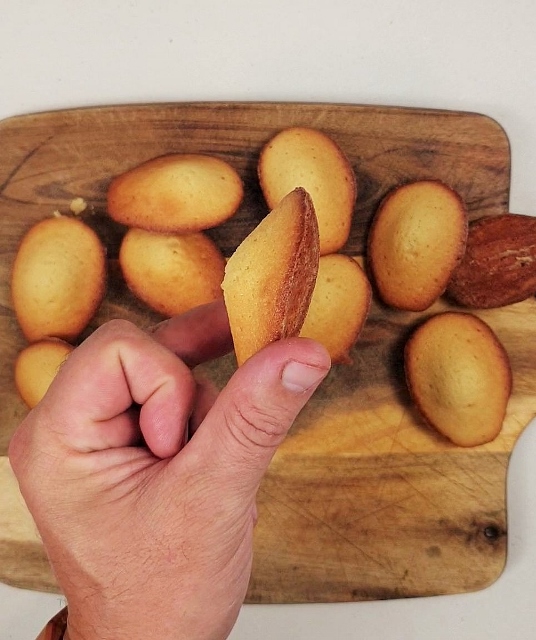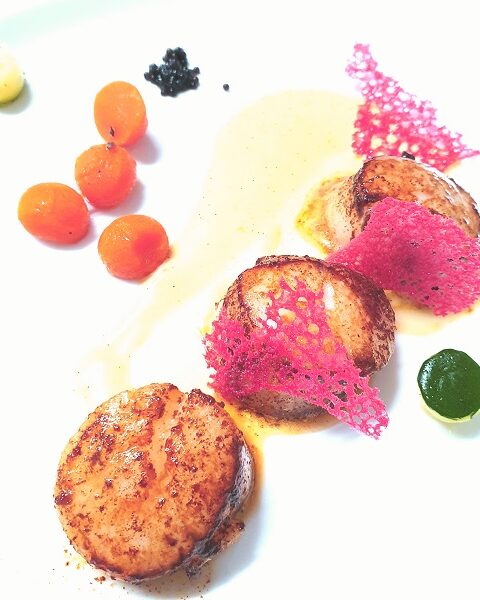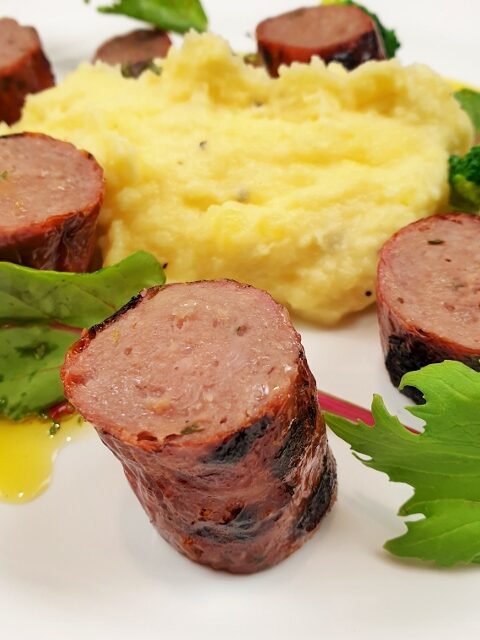
Madeleines are very small sponge cakes with a distinctive shell-like shape acquired from being baked in pans with shell-shaped depressions. Aside from the traditional moulded pan, commonly found in stores specialising in kitchen equipment and even hardware stores, no special tools are required to make madeleines.

A génoise cake batter is used. The flavour is similar to, but somewhat lighter than, sponge cake. Traditional recipes include very finely ground nuts, usually almonds. A variation uses lemon zest for a pronounced lemony taste.
British madeleines also use a génoise sponge but they are baked in dariole moulds. After cooking, these are coated in jam and desiccated coconut, and are usually topped with a glacé cherry.
To access my recipe and video, click on the link below:
The history or legend behind the Madeleines
The term madeleine to describe a small cake seems to appear for the first time in France in the middle of the 18th century. In 1758, a French retainer of an Irish Jacobite refugee in France, Lord Southwell, is said to prepare “cakes à la Madeleine and other small desserts”.

Several legends are attached to the “invention” of the madeleines. They have tended to center on a female character named Madeleine who is said to have been in the service of an important character in the history of Lorraine – although there is no consensus over the last name of the cook nor the identity of the famous character. Some consider that the illustrious patron was 17th-century cardinal and rebel Paul de Gondi, who owned a castle in Commercy. Others consider that the inventor was named Madeleine Paulmier, who is said to have been a cook in the 18th century for Stanislaus I, duke of Lorraine and exiled King of Poland. The story goes that, in 1755, Louis XV, son-in-law of the duke, charmed by the little cakes prepared by Madeleine Paulmier, named them after her, while his wife, Maria Leszczyńska, introduced them soon afterward to the court in Versailles. Much beloved by the royal family, they conquered the rest of France in no time. Yet other stories have linked the cake with the pilgrimage to Compostela, in Spain: a pilgrim named Madeleine is said to have brought back the recipe from her voyage, or a cook named Madeleine is said to have offered little cakes in the shape of a shell to the pilgrims passing through Lorraine.

Other stories do not give the cake a Lorraine origin and lay its invention at the feet of pastry chef Jean Avice, who worked in the kitchens of Prince Talleyrand. Avice is said to have invented the Madeleine in the 19th century by baking little cakes in aspic moulds.
Please feel free to share this post to everyone you know and love Madeleines.
Bon Appetit, Frenchy








